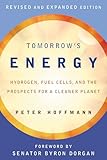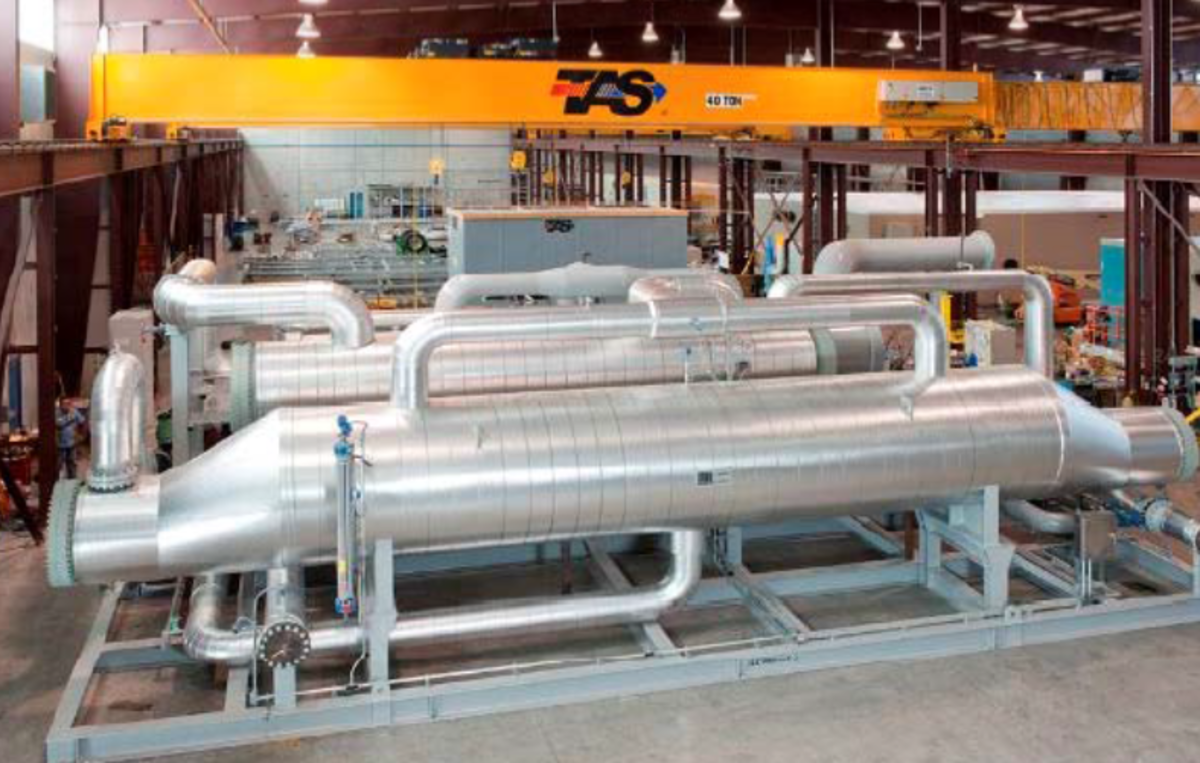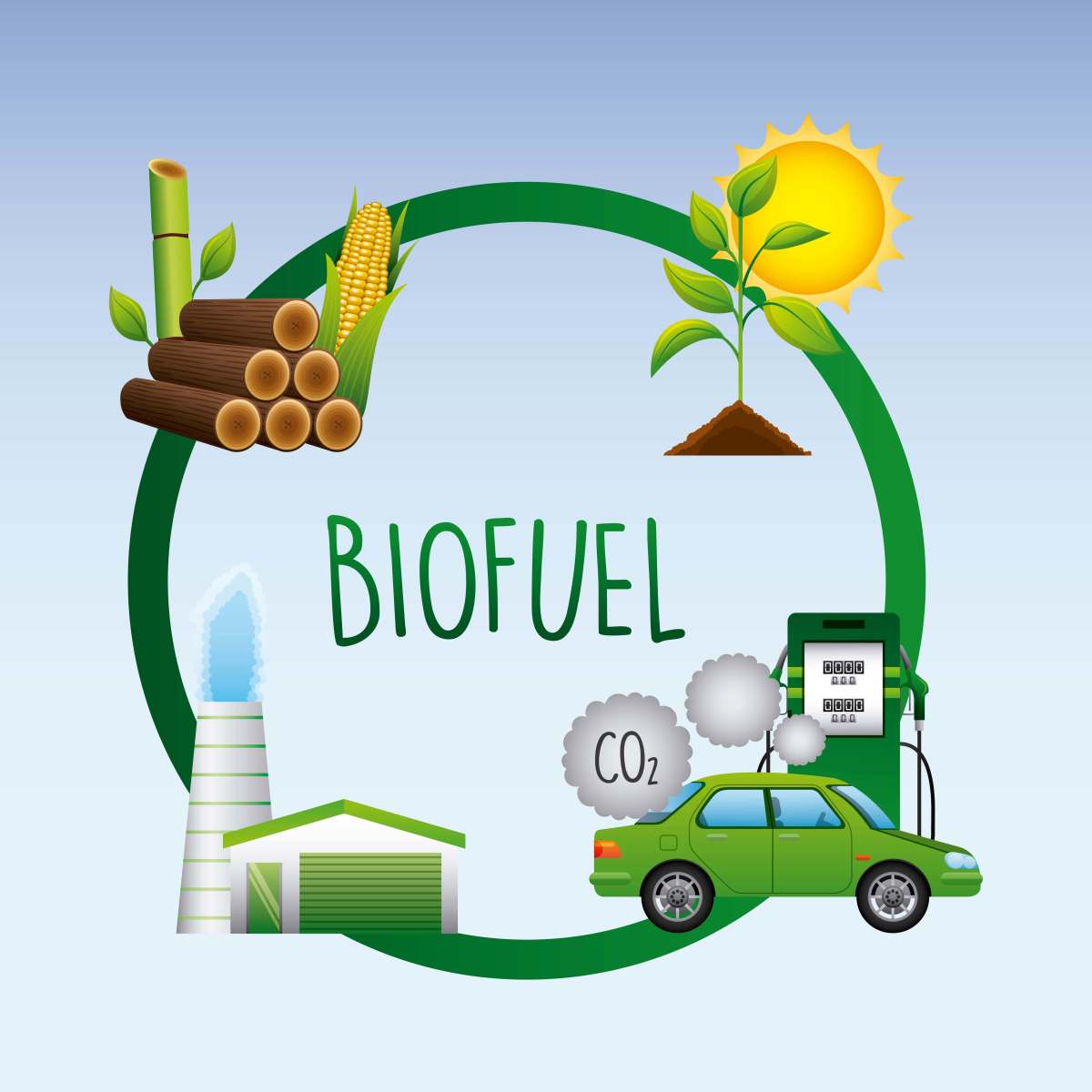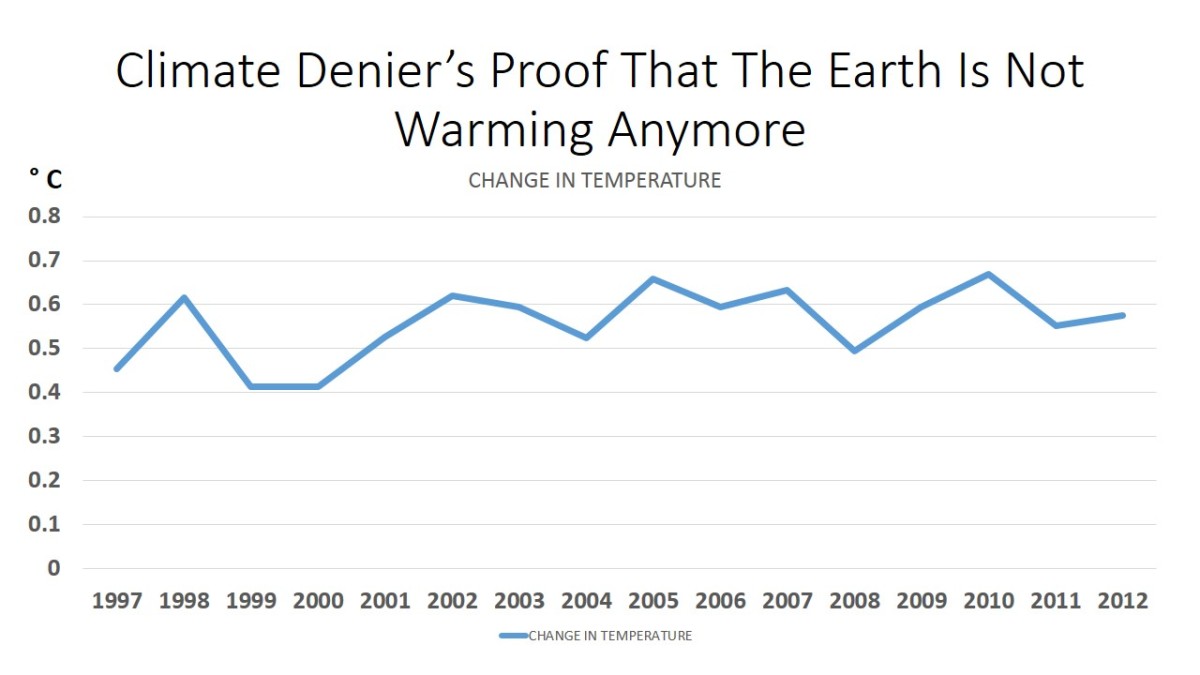Is water the fuel of the future?

The solar-wind-hydrogen renewable power team
Water is a chemical compound made of two hydrogen atoms and one oxygen atom - commonly called H2O. Remove the oxygen, and the hydrogen gas becomes transportable, storable clean fuel that can be burned like natural gas or turned into electrical power on demand - by recombining it with oxygen in fuel cells. The only emissions are chemically pure water!
Now, imagine using excess solar and wind power to make hydrogen anywhere - effectively storing that renewable energy until it's needed.
Up to now, there have been several hurdles preventing us from taking advantage of hydrogen as a common energy source - but recent breakthroughs in hydrogen production and storage are about to overcome the major ones - igniting a new stage of clean energy possibilities to power our homes and industries, and fuel our planes, trains and automobiles.
We're getting closer everyday to achieving practical and cost-effective means to store and transport intermittent renewable wind and solar energy - a true game changer that can get our fossil fuel problems under control.
Photo: solar light by jon smith [CC BY-SA 2.0] on Flickr.
Colossal fossil infrastructure - The climate is right for change
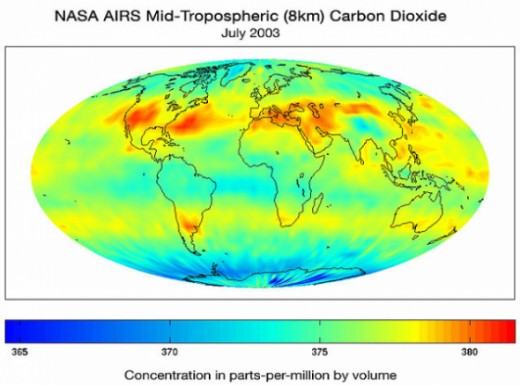
One of the most common arguments made against renewable energy technologies is that they can't immediately replace the flexible and broad based uses that we have come to depend on with fossil fuels.
That's not a big surprise considering we've spent two hundred years and endless sums of money developing our entire habitat, infrastructure and economic system around burning these non-rewable resources. In those same two hundred years, we've emitted more carbon dioxide than the atmosphere can handle, putting our very future at risk in the process, by dangerously raising the average global temperature and accelerating climate change.
We know this now and we know we must transition to clean energy sources as soon as possible to slow the effects.
But we can't just stop using fossil fuels. We need to ramp up our clean energy technologies to reliably take over the roles that fossil fuels play in our lives.
Photo: NASA CO2 graphic by AIRS Science Team, JPL [Public Domain] Wikimedia Commons.

Why we need fossil fuels (for now)
Renewable sources are intermittent
ELECTRICITY GENERATION
We all know the biggest drawback of current renewable energy sources like wind and solar power are the fact that they're intermittent. Solar panels are ineffective at night and wind turbines only function within a certain range of wind speeds. So we still need our fossil fueled and nuclear plants to supply reliable power whenever and wherever we need it - not just when it's available. That's called baseload power.
The other reason we're reliant on fossil fuels is to cover peak demand - times when the load is higher than normal such as very cold winter days when we need to heat our poorly insulated homes and office buildings and during heat waves when millions of air conditioners are operating. This reserve capacity to handle peak loads is very expensive to maintain and operate.
We can minimize the amount of energy generation needed to handle these peaks in several ways including:
1. Making our habitat more energy efficient (the cheapest energy is the kind you never need to produce)
2. Automated Demand Response (using technology to balance the overall load on the system)
3. Off-peak pricing incentives (cheaper rates at times when demand is usually lower)
TRANSPORTATION
Virtually all of our key modes of transportation are based on burning fossil fuels. Coal, natural gas and refined petroleum products like oil and gasoline have an advantage today's renewables can't yet match - they can all be stockpiled, distributed and carried on board vehicles, ships, or aircraft in large enough quantities to travel long distances without refueling. And when they do need to be refueled, it's reasonably fast and the infrastructure is in place to supply these fuels almost anywhere they're needed around the world.
Electric cars and the charging infrastructure to support them are beginning to gain ground. Unfortunately, much of the electricity for these vehicles still comes from fossil fueled generation. But electric vehicles are a step in the right direction because we can eventually replace the fossil fuels with clean energy sources and the this new charging infrastructure remains a critical part of the chain.
![Electrolysis experiment - by Nevit Dilmen [CC-BY-SA-3.0] wikimedia commons Electrolysis experiment - by Nevit Dilmen [CC-BY-SA-3.0] wikimedia commons](https://usercontent1.hubstatic.com/10672722.png)
The hydrogen connection
Hydrogen is all around us
Depending on your age, you probably have a particular thought that comes to mind when you think of hydrogen. If you're a senior, the first thing that might come to mind is the Hindenburg airship disaster in Lakehurst New Jersey in 1937. Boomers are more likely to think about the "hydrogen bomb", the early term for thermonuclear weapons developed during the cold war in the 1950's. Gen Xers may be most familiar with the great hope and promise of hydrogen fuel cell vehicles touted by the media at the turn of the millenium.
Talk of fuel cell vehicles seemed to all but disappear within a couple of years under the weight of several considerable technical challenges.
Some of these challenges were recently noted by Former Whitehouse Energy Secretary Steven Chu. We need:
- cleaner & less expensive methods of producing hydrogen in large quantities
- safe and reliable hydrogen storage devices for vehicles
- to reduce cost of fuel cells
- hydrogen fueling infrastructure be in put place
Hydrogen is the most common element in the universe and is found in most organic compounds - with water being the the most familiar to us. The world has plenty of water and organic matter available virtually everywhere we could possibly need it. We just need to harness it.
Recent technological advances suggest hydrogen is on the cusp of becoming easier and cheaper to produce in the form we need to make fuel cells work - just add oxygen and you get electricity and water. Combined with other clean energy technologies, we're looking at a whole new world of possibilities beyond cars.
Photo: Electrolysis experiment by Nevit Dilmen [CC-BY-SA-3.0] Wikimedia Commons.
What are hydrogen fuel cells - Mixing hydrogen with oxygen to generate electricity
A fuel cell performs a function similar to a battery - only instead of "holding a charge" - it produces electricity as long as it is supplied with fuel (hydrogen and oxygen). The science behind this technology goes back to the 19th century with the first crude fuel cell being invented by a German physicist in 1838. (wikipedia).
Modern fuel cells use expensive platinum and other rare metals that can withstand the rigors of the chemical reaction that creates the electrical current,
It's science! - Learn more about the fuel of the future
Our kids are going to play a pivotal role in the coming transition from fossil fuels to clean energy. Why not give them an early introduction to the science and concepts of fuel cells, solar and wind energy technology.

HHO generators increase fossil fuel efficiency - HHO car kits
Car enthusiasts, have started using hydrogen fuel cells to improve gas mileage of their vehicles. HHO is the term used to describe the fuel mixture of hydrogen gas (H2) and Oxygen (O1). HHO systems work with conventional gas and diesel engines to improve gas mileage and cleaner emissions by burning fuel more completely. These on-demand systems don't store hydrogen in a tank, but extract it from water as needed through an onboard electolyzer.
- Alternate Fuel HHO Systems-Do They Actually Work?
Get the background on HHO fuel cell systems - HHO: How to use water for fuel and save gas
First hand tips and experience in HHO fuel cell systems
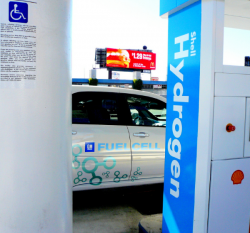
Hydrogen in the news
2013 hydrogen technology announcements
- two university of Calgary researchers have developed inexpensive catalysts to produce hydrogen from water
- Virginia tech researchers have discovered a way to extract hydrogen from xylose - a simple sugar found in plant biomass
- Cella Energy creates safe storage of hydrogen in plastic pellets
- Hydrogen Fuel Cells Could Add Year-Round Reliability to Renewable Energy
- Hydrogenics to build 1 Mw hydrogen storage system in Hamburg, Germany in 2013
- Strong support for hydrogen fuel technology in Japan since Fukushima disaster
- HyperSolar to build demonstration commercial-scale hydrogen generator
- HyperSolar polymer electrocatalyst coating could eliminate the costly use of platinum in fuel cells
- DOE recently released a report on the viability of blending hydrogen into existing natural gas infrastructure
All of these recent developments bring us that much closer to adopting hydrogen as part of our fuel system in the near term. Whether it's used to power fuel cells in our vehicles, turned into electrical power at our homes or at large-scale utilities, or burned as a blend with existing natural gas in home or industrial appliances, hydrogen will be an important clean energy component in the future.
Photo: GM "Zero Emissions" By ideow [CC BY 2.0] on Flickr.
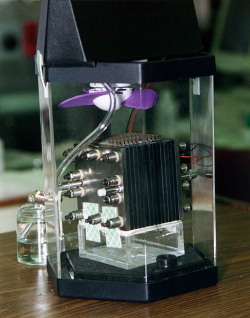
Why these breakthroughs are game changers
Reduced costs and zero CO2 emissions
Each of these technological advances are important by themselves, but combined, they provide the recipe for a viable hydrogen-based economy in the not-so-distant future. Let's look at the three main areas: Hydrogen Production, Fuel cells, Hydrogen Storage and infrastructure.
HYDROGEN PRODUCTION
Currently, the conventional method of making hydrogen is steam reforming of natural gas. Besides wasting energy, reforming natural gas also emits a considerable amount of CO2 in the process, drastically reducing the net benefit as an alternative to fossil fuels. To date, this has been one of the major drawbacks of converting to hydrogen as a widely used energy source.
The good news is hydrogen can also be produced from water using catalysts in an electrolizer to separate the oxygen from the hydrogen with no C02 byproducts. Current catalysts use very expensive platinum and rare-earth metals which have not offered a cost-effective alternative to gas reforming on a large scale.
A University of Calgary research team has just discovered how to make catalysts from base metals - even common rust - costing up to 1000 times less than current methods. That's a significant development in the pursuit of hydrogen as an affordable source of fuel.
From a completely different direction, researchers at the University of Virginia, have come up with a cocktail of 13 enzymes that can release pure hydrogen from xylose- an abundant simple sugar that makes up 30% of plant cell walls. This can be done at low enough temperatures that there is actually a net energy gain in the process. This development has huge potential for viable large-scale hydrogen production as well.
There are other CO2-free methods of hydrogen extraction being developed including extracting it from incinerator bottom ash.
FUEL CELL COST REDUCTION
Fuel cells are very expensive to make due to the need for belectrodes made from platinum and other very expensive material that can withstand the corrosive effects of the chemical reaction/b that produces electricity. In 2013, Honda is releasing a fuel cell vehicle at a production cost of $120,000.
HyperSolar has developed a conductive polymer coating to protect metals against photocorrosion when exposed to UV. Its intended purpose was to protect solar panels submerged in water their hydrogen generation demonstration they believe this coating may also be used to protect less-expensive metals than platinum, which could significantly reduce the cost of PEM (proton exchange membrane) fuel cells. This is promising but has yet to be tested.
RENEWABLE ENERGY STORAGE AND HYDROGEN GENERATION
Storing hydrogen for practical use typically requires tanks under extremely high pressures to reduce the volume or extremely low temperatures, both of which require a lot a energy to accomplish. Using nano-encapsulating technology, Cella Energy has recently devised a way to safely store hydrogen in plastic pellets at ambient temperatures and pressures. When heated, one gram of pellets produces one litre of hydrogen.
HyperSolar is getting set to roll out a demonstration project for commercial-scale hydrogen generation. Their process combines the functions of an electrolyzer, which separates the hydrogen from the oxygen molecules in water, and collecting solar energy to power it, by submersing the solar panels themselves. If this proves to be viable, standalone hydrogen generators and storage tanks could be installed anywhere, at your home, industrial parks, and along roads and highways with no connecting infrastructure required.
BLENDING HYDROGEN WITH NATURAL GAS
Hydrogen is a combustible fuel like natural gas and propane. A recent US Department of Energy report indicates that hydrogen can potentially be mixed with natural gas up to 20% of volume without changing existing gas infrastructure or end use appliances such as furnaces, ranges and dryers. The benefits in C02 reduction would be significant if the hydrogen comes from the low-carbon sources on the horizon. The amount of hydrogen in the blend could be increased over time as infrastructure and appliances are modified to handle the increased hydrogen levels.
The report also suggests pure hydrogen could be transported with natural gas through existing pipelines and separated back out in it's pure form at logical extraction points downstream. This may not be cost-effective or even necessary, since developing technologies could enable hydrogen to be produced at or near the point of end use in sufficient quantities in many cases.
Photo: Fuel cell [Public Domain] (wikimedia commons)
The Hydrogen House Project - Proof that this all works
If you think this is all way-in-the future stuff, think again. Inventor, Mike Strizki turned his New Jersey home into a working clean energy demonstration site in 2006. Mike's Hydrogen House Project runs completely on solar power, supplemented by hydrogen produced and stored on-site. In fact, he sells some of his excess power to the local electrical utility. Granted, this system cost around a $150,000 to build, but it's a laboratory that points the way to a more sustainable future. Mike collects renewable energy from solar panels to power his home, stores the excess energy from sunny summer days in the form of hydrogen gas, which can be either burned as a clean fuel in gas appliances or recombined with oxygen in fuel cells to produce electricity on demand.
Mike also uses the stored hydrogen to fuel his electric/hydrogen fuel cell car and his lawnmower. He's got a lot of good ideas that show promise for helping us to move from fossil fuels to fuel cells, including his Hydra mobile generator and water purifier. This water purifier has caught the attention of the US military which sees adopting clean energy as one it's highest priorities in minimizing future global conflict due to climate change.

What the future could look like
These new innovations create a viable pathway to expand our renewable energy infrastructure as we continue to move away from our reliance on fossil fuels. Yes, it will take time - several decades at least - but the sooner we make the leap the better off we'll be. And we don't have a lot of time to waste. Cheaper and cleaner methods of producing hydrogen from locally available water and plant material are certainly the game changer that will jump start the global hydrogen economy.
Inexpensive solar panels are a boon to developing countries because they enable a technology leap. Think about the recent explosion of communication technology in many developing countries - they jumped directly to mobile phones - bypassing the hundred-year evolution and infrastructure costs of land lines that eventually led us to the smart phone age. Solar power allows anyone, anywhere to have a power source for lighting and charging their mobile phone. Entire regions have the potential to develop using distributed renewable energy- once again, foregoing the need to build a fully-wired infrastructure to get there.
Add the on-site production and storage capabilities of hydrogen to this and the possibilties are endless.
Photo: Hydrogen bicycle by Shanghai Pearl Hydrogen Power Source Technology Co. [CC-BY-SA-3.0] via Wikimedia Commons.
The Hydrogen Economy - Here are a few things to look for in the next decade:

- solar/hydrogen backup generators
- roadside hydrogen refueling stations near urban centres and main highways
- solar/hydrogen powered homes
- more hydrogen fuel cell & electric hybrid vehicles
- commercial-scale solar/wind/hydrogen production facilities
- hydrogen stored in underground caverns
- hydrogen mixed with natural gas
- carbon taxes and cap and trade pricing
- reduced coal use
- lower CO2 emmisions
The industrial revolution is winding down and and our dependence on fossil fuels will follow the same path as we move into the new economy. Exciting times.
Photo: $20 of hydrogen per passenger, LA to Beijing By Sam Beebe, Ecotrust [CC BY 2.0] on Flickr.
"Water will be the coal of the future"
'Yes, my friends, I believe that water will one day be employed as fuel, that hydrogen and oxygen which constitute it will furnish an inexhaustible source of heat and light. Water will be the coal of the future.'
Jules Verne, The Mysterious Island , 1874




